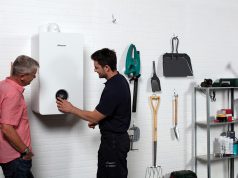
From desktop computers in offices to power drills on construction sites, almost every workplace depends on electricity to function efficiently. But electricity is a double-edged sword. And while electrical tools are most of the time utterly safe to use, they still pose a risk for electrocutions and electrical shock injuries.
Roughly 1000 electrical injuries in the workplace are recorded in the UK every year. Sadly, approximately 30 of these are fatal. According to the Health and Safety Executive, the most common cause of the accidents is direct contact with an electrical charge, including poorly maintained equipment, specifically portable electrical tools.
For this reason, many businesses have their electrical appliances and equipment undergo PAT. You’ve probably heard the term several times but are not sure 100% what it means. Here, we are going to discuss PAT in detail.
What Does PAT Stand For?
PAT stands for Portable Appliance Testing. It is a routine inspection conducted on electrical appliances and equipment to make sure they can be used safely in the workplace and any other public environment.
PAT usually involves visual and electrical inspections. The visual test searches for visible signs of damage, such as cracks, dents, discolorations, scorch marks, and wear. Electrical inspection utilizes specialized PAT devices to detect some types of defects. The procedure includes earth resistance, earth continuity, and insulation resistance tests, as well as polarity and safety-switch checks.
There is a common misconception that all electrical items should undergo a full PAT test. Some appliances are subject to a thorough check, while others only need a simple visual inspection. The two factors that determine if an item should be PAT inspected are category and class. Category groups the items based on their type: stationary appliances, fixed appliances, moveable appliances, T appliances, etc. Class sorts them according to their risk level, with class one being the most dangerous and three the least threatening.
Class one items need a full PAT inspection because they have low insulation and rely on earth for protection. The group typically includes photocopiers, industrial machinery, freezers, toasters, irons, laptop cables, vending machines, desktop computers, phone chargers, and microwaves. Class two appliances, such as lamps, televisions, and lawnmowers, are safer because they are double insulated and need an insulation test. Low voltage appliances such as laptops, torches, and cameras fall under class three and are considered the safest.
Why Do PAT Testing?
The principal purpose of PAT testing is to ensure that electrical appliances are safe to use, thus minimizing if not entirely preventing accidents and injuries in the workplace. Exposed wirings and loose connections can cause severe harm, and in rare cases, lead to death. Unchecked electrical issues are also a fire risk, which endangers not only the employees but also the entire business.
The Health and Safety at Work Act 1974 states that employers are responsible for the safety and well-being of their employees in the workplace. Businesses are also accountable for any customer or visitor who might be on the site. Furthermore, the Electricity at Work Regulations 1989 requires all companies to inspect their electrical appliances and equipment regularly to ensure that they are safe to use. Failure to comply with the legislation can lead to severe penalties.
PAT in itself is not a legal obligation. However, it is one of the most efficient and trusted methods of checking the safety of electrical appliances and equipment in the workplace and other environments. As a result, PAT has become the standard means of complying with the legal requirements in the UK.
Lastly, many insurance firms require businesses to complete regular PAT inspections. Conducting PAT to maintain high levels of safety in the workplace will make the insurance company view the business favourably.
Where Does PAT Testing Apply?
Technically, all organizations that use electrical appliances in their place of work are required to undergo PAT testing, from private companies to health clubs and universities. Businesses are labelled as high, medium, or low risk based on three factors, the risk level of the environment, the type of equipment used, and who uses them.
Shops, hotels, schools, and offices, in general, have a low-risk level because electrical items here often stay in only one place and so are unlikely to be damaged. Hospitals, night clubs, beauty salons, and industrial buildings, such as factories and commercial kitchens, pose a medium risk as these are fast-paced places with a variety of appliances and equipment. Examples of high-risk environments are gyms, arcades, and other high traffic areas where the public can freely use the available electrical equipment. Construction sites, with their frequently chaotic pace and rampant use of hand-held tools, are very high risk.
Businesses that offer accommodations, including holiday rentals, flats, and even boats, also need to comply with the requirement, especially if they have class one appliances such as kettles, microwaves, and washing machines.
Although the legislation does not define the frequency of PAT tests, the rules state that the level of precaution taken should be equal to the hazard level of the place. Meaning, high-risk environments should have more testing. The HSE also recommends additional factors to consider in determining how often the items should undergo PAT check. These are the age of the equipment, frequency of use, foreseen misuse of the equipment, effects on any repairs, and manufacturer’s recommendations.
Who Can Do PAT Testing?
The legislation did not mention who should conduct the PAT test or what qualifications the person has, only that he or she be competent. The Institution of Electrical Engineers defines a competent person as having adequate knowledge of electricity and sufficient electrical work experience. Additionally, he or she should know how to perform a visual inspection, understand the precautions to take, and recognize whether it is safe for the test to continue.
Many companies and businesses designate one of their employees to undergo PAT training, as the course does not entail any requisite electrical credentials. Indeed, anyone who has completed a thorough PAT testing training course can be a PAT tester.
PAT Testing Training
Whether you are an electrician who wants to supplement your formal training, a building manager who aims to learn new skills or a landlord who oversees the safety of your tenants, you can be a certified PAT tester. All you need to do is complete a course online or one that’s facilitated by a qualified instructor, then pass a certification exam.
The training course covers essential electrical safety measures in the workplace and the main principles in electrical testing. It also teaches how to carry out visual tests and how to use various PAT devices, as well as understand the theoretical and legal features of PAT testing.













